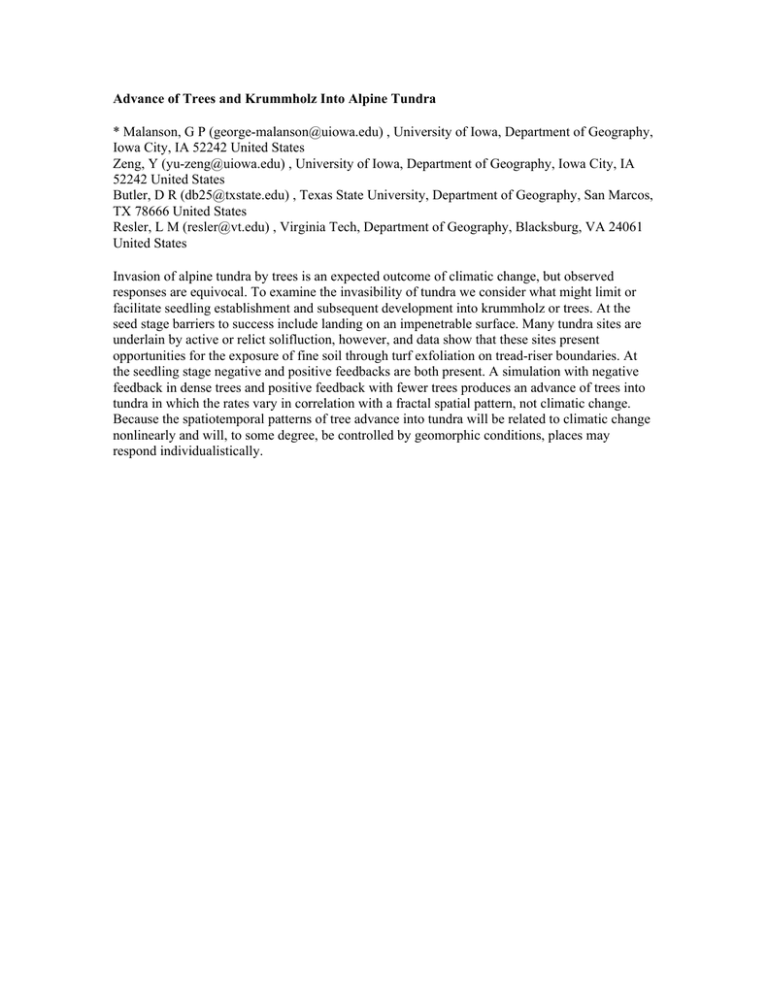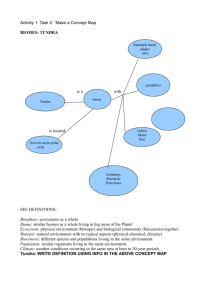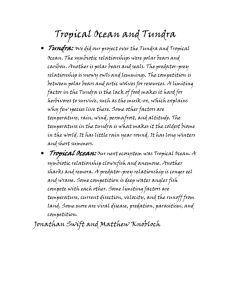Advance of Trees and Krummholz Into Alpine Tundra
advertisement

Advance of Trees and Krummholz Into Alpine Tundra * Malanson, G P (george-malanson@uiowa.edu) , University of Iowa, Department of Geography, Iowa City, IA 52242 United States Zeng, Y (yu-zeng@uiowa.edu) , University of Iowa, Department of Geography, Iowa City, IA 52242 United States Butler, D R (db25@txstate.edu) , Texas State University, Department of Geography, San Marcos, TX 78666 United States Resler, L M (resler@vt.edu) , Virginia Tech, Department of Geography, Blacksburg, VA 24061 United States Invasion of alpine tundra by trees is an expected outcome of climatic change, but observed responses are equivocal. To examine the invasibility of tundra we consider what might limit or facilitate seedling establishment and subsequent development into krummholz or trees. At the seed stage barriers to success include landing on an impenetrable surface. Many tundra sites are underlain by active or relict solifluction, however, and data show that these sites present opportunities for the exposure of fine soil through turf exfoliation on tread-riser boundaries. At the seedling stage negative and positive feedbacks are both present. A simulation with negative feedback in dense trees and positive feedback with fewer trees produces an advance of trees into tundra in which the rates vary in correlation with a fractal spatial pattern, not climatic change. Because the spatiotemporal patterns of tree advance into tundra will be related to climatic change nonlinearly and will, to some degree, be controlled by geomorphic conditions, places may respond individualistically.





